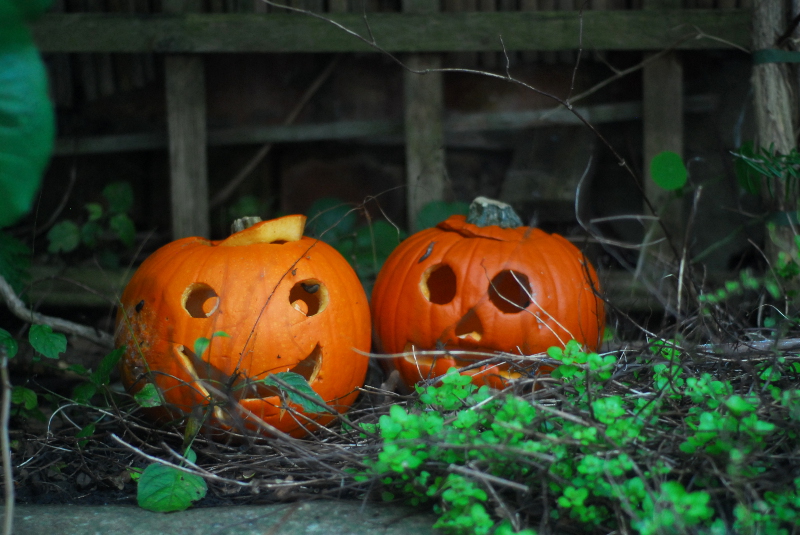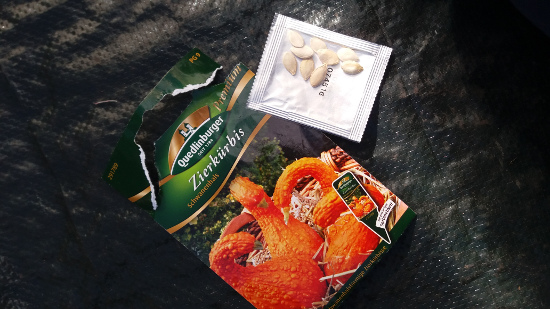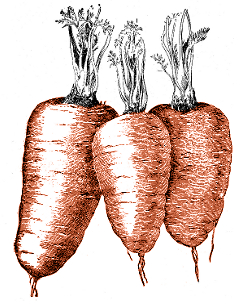Posts tagged ‘squash’
Posted in Children, Garden Diary, Environmentalism, Experimentation, The Old Garden In Bristol on Wednesday, December 2nd 2020 (5.18 PM).
The previous post was about putting Halloween pumpkins in the garden to decompose. Now they’ve been there for a month, I thought it was about time to post a composite of their gradual decay into the soil.

It makes me a little sad to see this, especially given the goofy grin on The Child Who Likes Animals’ design. Still, I have to remind myself that it is inevitable, and they are just part of the circle of life and death in the garden. They have been broken down by mould, eaten by slugs and snails, and are now feeding the herbs and the honeysuckle.
Halloween, pumpkin, squash, decay, back bed, autumn
Posted in Children, Garden Diary, Environmentalism, Experimentation, The Old Garden In Bristol on Sunday, November 8th 2020 (10.14 AM).
The other day, over on the main blog, I briefly mentioned that the Hallowe’en pumpkins have been put into the darkest corner of the garden, the southern end of the back bed, for the local slugs and snails to eat. As not much grows successfully in that corner of the back bed save for sweet cicely and (once) tree spinach, it tends to be left as something of a wildlife corner; and The Child Who Likes Animals likes to leave things like melon rind there, to see how it attracts invertebrates and to watch it decay. So, a week ago when it was time to put the hollowed-out carved pumpkins in the food waste, we thought it might be a nice idea to leave them in the garden instead.

It was getting towards twilight yesterday when I took this photo; but you can see that there are a number of small slugs greatly enjoying them. Mould is spreading, too, and spiders are using them to lurk behind. If they behave like a melon rind does, the flesh will slowly disappear and possibly in a few weeks time only a papery skin will be left.
Halloween, pumpkin, squash, decay, back bed, autumn
Posted in Decorative, Experimentation, Garden Diary, Inspiration, The Old Garden In Bristol on Tuesday, April 26th 2016 (9.46 PM).
A few years ago, now, we spent a couple of weeks one September on a camping trip to the Mittelrhein region of Germany. We spent those weeks driving around various towns and cities: Koblenz, Köln, Mainz, Bonn, countless smaller towns with a town wall, four gates, gingerbread architecture and a castle overlooking it all. Towards the south of the area we visited every valley was covered in vineyards; but further north, where the land flattened out towards the spires of Köln cathedral, we drove along surrounded by pumpkins and squashes ready for harvest.
Up in the Eifel hills, west of Koblenz and Andernach, we visited the Benedictine abbey of Maria Laach, tucked away inside the crater of a beautiful, placid, dormant volcano. In the abbey’s shop we bought two souvenirs: a bottle of the roughest cider I’ve ever tasted outside Somerset, and a packet of ornamental squash seeds, a variety of Curcubita pepo called “Schwanenhals”, or “Swan-neck”. In our tent we drank the cider and grimaced; and when we got home, the packets of seeds went into the seed tin. No doubt to German gardeners they are just a regular brand of seeds from the local garden centre, but to us they were something of a holiday souvenir.
We never actually planted them, though, but the other week when working out what we could grow within our new set of gardening tenets, and as I was going through my seed tin working out what might be salvageable and workable within those guidelines, I came across the Zierkürbis packet. The seeds are obviously well past their recommended sowing date, but the longer they were left on the shelf the less viable they would always be in any case. So today, all 9 seeds in the packet went into fibre pots on the windowsill; the hope being that, should any sprout, they will be large enough to be transferred outside right at the ideal time of year.

It will, of course, be slightly disappointing if nothing comes up; but better than never knowing at all.
squash, zierkürbis
Posted in Retrospective, The Old Garden In Bristol on Sunday, October 16th 2011 (9.05 AM).
This post is, unfortunately, going to be rather low on photos compared to those previous, because plants that aren’t growing well, are dying off or somehow going wrong, aren’t really inviting subjects for the camera. I’ve resisted the temptation, though, to title it “Failures”, because all of these plants gave something to the garden, even if it was just a clump of foliage or something for the local caterpillars to eat.
Pattypan squash: this is an example of why you should be careful what plants you let into your garden. We decided we wanted a pattypan squash plant: they can look rather attractive, and we always use plenty of squash in cooking. By the time we decided we wanted one, though, it was definitely a bit late in the season to be growing one from seed. We went down to one of the local garden centres; all the pattypans they had looked to have signs of mildew on their leaves. We bought the best we could find, but the signs of mildew did indeed turn into worse mildew. It fruited, but its fruits were hardly an inch across. Of course, I’ve heard since, this year has been a bad year for squashes, but I’m sure that a healthier plant would have had a better chance of success.
Dill: We love dill, particularly with salmon in the Scandinavian style, so dill had to be a must for the garden. We planted plenty of dill seeds, and they sprung right up, right away. But then they didn’t stop springing. Every dill plant we grew turned into a tall, spindly thing, four or five feet high but with barely any usable foliage. Pinching out the tips didn’t seem to help.
Spring onions: these we grew from seed, and they started out well. They seemed to be taking a while, but we weren’t too worried, having picked a variety with a low chance of bolting. Then, though, a period of hot weather followed by heavy rain ruined the majority of the plants, snapping the stems. A handful have grown back from that, but neither those nor the ones which avoided the rain in the first place have really reached a harvestable thickness.
Sweet peas: the idea with these was: companion plants around our green beans. The problem with them was: they grew too well. They grew around the beans, over them, taller than them, almost swallowing them up. And then didn’t even flower. The problem, maybe, is that sweet peas aren’t bred to grow in vegetable-quality compost, which is possibly an issue with any companion planting scheme that involves decorative and produce plants mixed in together.
Japanese saltwort: we spotted this in one of the local garden centres, the excellent Riverside co-operative. We bought it because it was intriguing, and unusual. It grew, grew well. The problem, though was that we didn’t really know what to do with it; and its heart quickly became dead and woody, the living parts straggling over the edge of its pot. I have the feeling it is one of those plants which, if not kept in a container, could easily take over an entire garden.
What to learn from all this? Well, next year, we’ll definitely be keeping our spring onions rather more sheltered. We’re on the hunt, too, for a different variety of dill to try. The most important thing to remember, though: however much we want a particular variety of plant in the garden, only let it come in if it’s healthy.
dill, japanese saltwort, pattypan squash, saltwort, scallion, spring onion, squash, sweet pea



